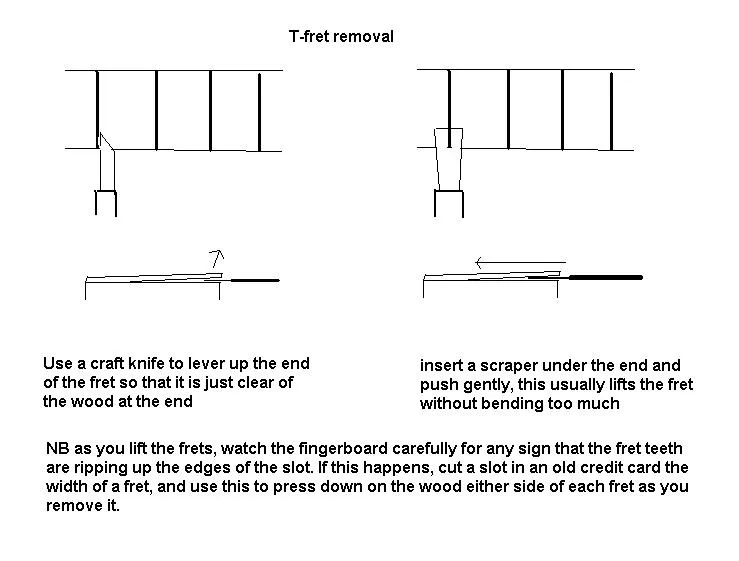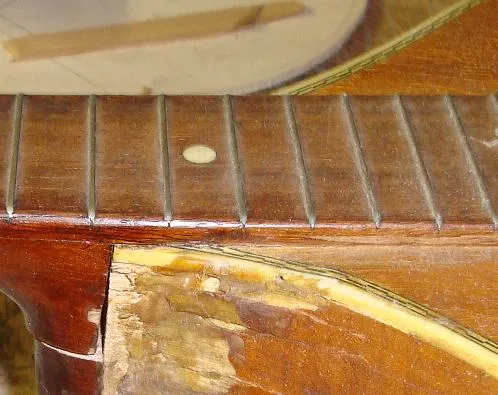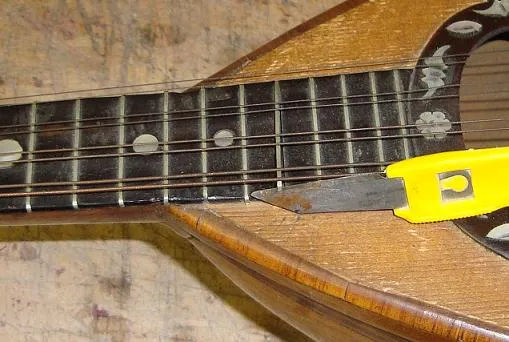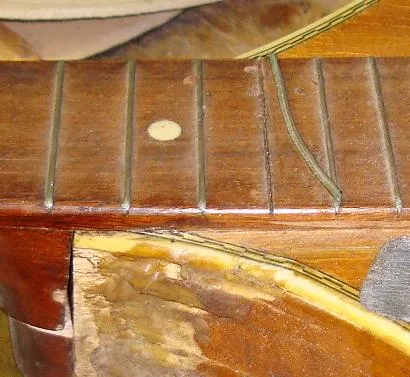Firstly, you only remove frets when the bending in the neck is too severe for this dip to be fixed by levelling the frets. If the dip is very slight, levelling the frets is the easiest option. If by levelling you would reduce the fret height to almost nothing, then you need to remove and level the fingerboard.
There are two types of frets you may have to deal with..... tanged and non-tanged (i.e. with and without teeth) which are designed to grip the edges of the fret-slot and hold the fret in place. The approach to the removal of both is the same, but toothed are a little trickier.
If your old frets are badly worn, then you may need to re-fret with new frets, so conservation of the frets is less important, but guarding against ripping out is!!

Bar frets
T frets






